Leland & Gray lead the way
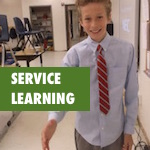 Leland & Gray Union Middle and High School, in Townshend, VT, used a popular 5-stage framework in planning their service learning: investigation, preparation, implementation, reflection, and celebration.
Leland & Gray Union Middle and High School, in Townshend, VT, used a popular 5-stage framework in planning their service learning: investigation, preparation, implementation, reflection, and celebration.
And they used this framework to improve their school’s infrastructure in powerful ways.
Outdoor classroom, anyone?
It’s the last two weeks of school and Leland & Gray students are busy.
One team is building an outdoor classroom.
https://twitter.com/JPhillipsVT/status/1008059064109105154
Another team is building planters to rejuvenate a neglected area of their school. They’ve chosen a variety of beautiful and sustainable plants to fill them, too.
https://twitter.com/JPhillipsVT/status/1008061780306878465
The murals team are working on five. different. murals.
https://twitter.com/JPhillipsVT/status/1008060553879867392
And the trail maintenance team is renovating trails around the school: clearing brush, rebuilding a bridge and adding a welcoming arbor.
https://twitter.com/JPhillipsVT/status/1008064147555221505
How did students and teachers prepare for these hands-on projects?
They broke the process down into manageable stages.
For their third big project-based learning unit of the year, Leland & Gray teachers wanted students to “make a difference” in their community. Service learning was the perfect fit, and the K-12 Service Learning Project Planning Toolkit (.pdf)provided a framework for student-led community service.
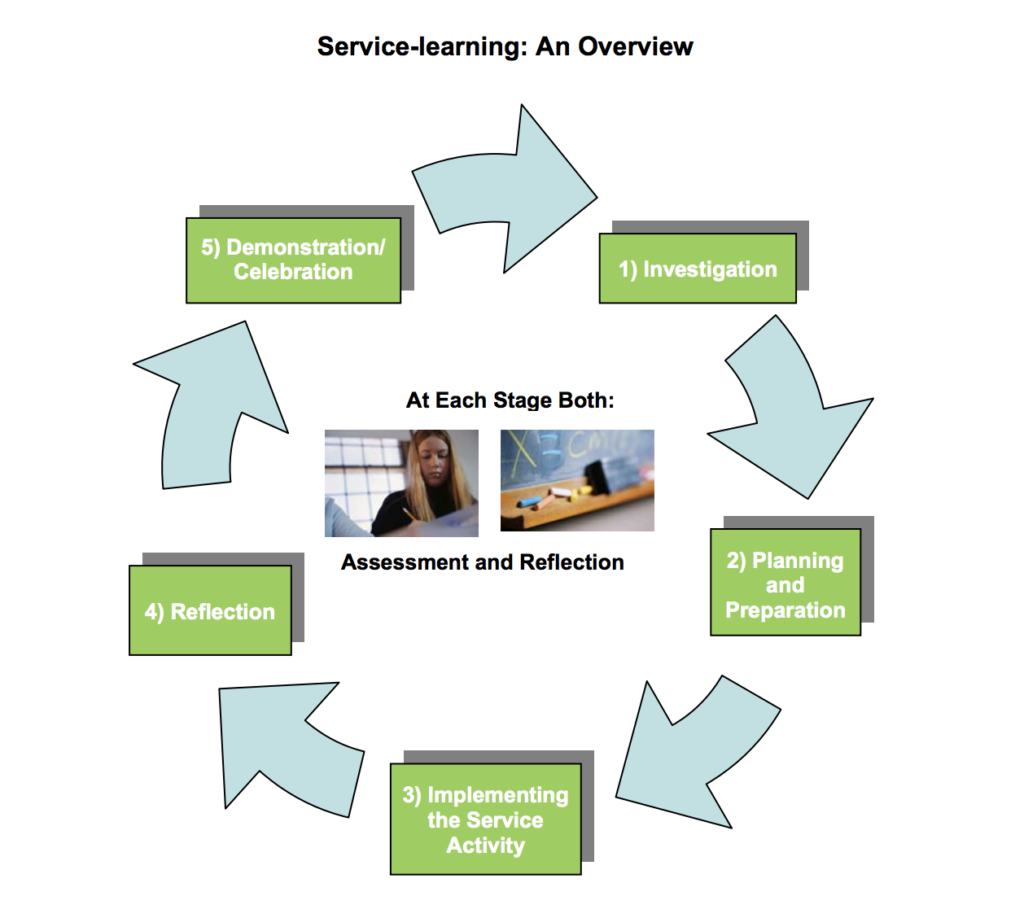
5 stages of service learning
1. Investigation
In the investigation phase, students explore and analyze their school setting. What problems exist that they might solve or improve? What opportunities exist for building community?
With these questions in mind, they begin to explore solutions.
Leland & Gray teachers scaffolded this learning during advisory, beginning by exploring the very concept of service-learning. Students watched and discussed the video below to better understand the work ahead.
Leland & Gray teachers wanted students to think broadly as they examined the local environment. To this end, they asked the students to unpack some categories and brainstorm some problems, issues, and opportunities that fit into each one. The categories:
- Safety
- Environment
- Beautification
- Community spaces
- Community-building
- School culture
Mapping the community
Finally, students were ready to engage in some community mapping. Each advisory group took a different route as they explored their campus and the surrounding town. As they walked, they gathered ideas — problems, opportunities, and possible solutions — on a graphic organizer.
When they returned to their classrooms they brainstormed an enormous list of potential service-learning projects organized by their categories.
Choosing projects
Inspired by the students at Burke, Leland & Gray teachers consolidated the lists from all advisories into one and asked students to vote on their top choices, using dot-voting. This narrowed them down to a list of four:
- Creating a new outdoor classroom
- Painting community-minded murals
- Beautifying the campus through nature
- Maintaining and renovating local trails
Students used a Google Form to choose the project they wanted to work on and formed teams.
2. Planning and preparation
The planning and preparation phase asks students to develop an action plan. The Leland & Gray teachers kicked it up a notch by requiring students to write grants for funding. Students wrote out grant proposals (including budgets) and applied for funding from a local non-profit.*
Getting to Why
The teachers wanted students to really think about the purpose of their service, and not just the service itself. They wanted them to outline what they were doing, but also why.
https://www.youtube.com/watch?v=IPYeCltXpxw
After watching Simon Sinek explain the power of why, teams discussed the relevance of their own work.
Teachers selected readings connected to each project and students used these to explore their whys. Depending on the team, this instructional time took one of two forms:
Common reading
- Students read a common reading related to their service-learning project
- As they read, they highlight text that answers the question “why?”
- The team collects the “whys” on chart paper or sticky notes
- The team organizes and prioritizes the “whys” as a group to generate a list
- As a team, or in small groups, they rewrite the whys into a short paragraph that explains their purpose
Jigsaw reading
- Give small groups within the team different readings
- Ask each group to generate 3 “whys” for the project
- As a whole group, share “whys” on chart paper or sticky notes
- The team organizes and prioritizes the “whys” as a group to generate a list
- As a team, or in small groups, they rewrite the whys into a short paragraph that explains their purpose
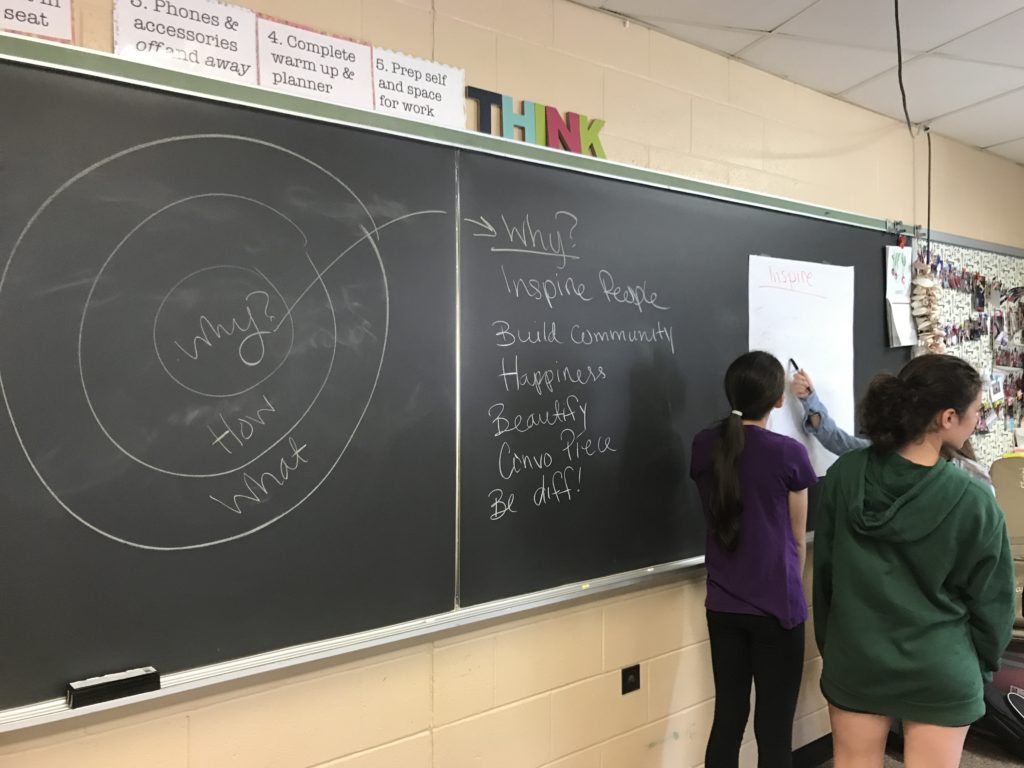
The results to the “why” question became the purpose statement for the student-authored grant applications.
Here are a few examples of student purpose statements:
We are making an outdoor classroom for our school to have class in. It will allow kids to escape the indoor classroom that we have been in for the entire school year. We want to have the experience of getting taught outside the normal classroom. With the space we found we can use it to learn and experiment in the outdoor area we will build in nature. We want to build an area that is safe welcoming, and inspirational with having fun as it is built and as we learn in it.
The goals of our project is to make a mural outside were people can see it, be inspired by it, and have the mural make them happy. Our goal is so that people can walk by it when they are outside either go to a basketball game, eating lunch or walking around. We also are trying to make it an even more beautiful and a happy learning environment for other students. I think that it will have a positive and happy impact on kids and their growth through art. We hope that it will inspire kids.
Deciding on the What
Specifically, what:
- murals would they paint?
- would their outdoor classroom look like?
- trail maintenance and renovation would they focus on?
- plants and trees would they use to beautify their campus?
Some teams used a brief affinity mapping activity to brainstorm ideas, organize them and then make a decision. Other teams did a simpler brainstorm to collect ideas for meeting their purpose and then used dot-voting to determine which idea(s) they would pursue.
The answers to the “what” question not only set the course of action ahead, they also contributed to the grant proposals:
For our service learning project, we are planting flowers and other vegetation to help beautify the school. This will help make a better learning environment for the school and make it more inviting for visitors and the community. People who care for nature will probably care for others. Our project ideas are to make:
- succulent wall garden
- edible garden for classroom
- cactus garden
- terrariums
- hanging plants
- flowers to enhance the outdoor classroom
- bleeding hearts out front
There are several aspects to the trail maintenance project. We are revitalizing community trails that have been neglected; giving them new life. We are renovating a dilapidated old bridge that leads to a ropes and exercise course. We are also creating an arbor as an entryway to a trail system. Lastly, we are going to create a laminated storybook series of signs that line a trail near the elementary school.
The “what” was also a crucial step toward figuring out the “how” of the action plan.
Planning the How
Teachers asked teams to consider a range of questions as they further developed their action plan:
- Materials and resources
- What do you need?
- What will it cost?
- Where will you get it?
- Community support
- Who in the community might help you?
- Who in the community will benefit?
- How might you include them?
- Timeline and work plan
- What steps will you take?
- How long will each step take?
- What roles will different people play?
- Evaluation
- How will you know you have been successful?
Teams jigsawed the work, coming back together to share their results and develop a cohesive plan.
Gathering supplies and materials
Once students received word that their proposals were funded, they began acquiring materials and tools necessary to complete their service projects.
While many materials would be purchased with grant funds, teams got creative about the supplies. The trail maintenance team used Front Porch Forum to collect rakes, shovels, and other tools from kind-hearted town residents. The murals group solicited donations of paint from a nearby hardware store.
3. Implementation
As facilitators, teachers engaged the students in some important considerations: how would they build in time for clean up? What would they do on rainy days? How would they decide which roles students played?
4. Reflection
Teachers also engaged students in lots and lots of reflection! Here are some of the prompts they used:
- What was satisfying about today’s work? What was challenging?
- How did your plan support the work you did today? How might you improve your plan?
- If others wanted to do a project like this, what advice would you give them?
- What went well? What could be improved?
They also used a variety of strategies to help students reflect deeply:
- Chalk Talk
- Think Pair Share
- Walk and Talk
- 6-word stories
- Metaphors: Consider the work of the day. What traffic sign does it bring to mind? Why?
- Plus and delta chart
- Quiet write or draw
And now for 5: Celebration.
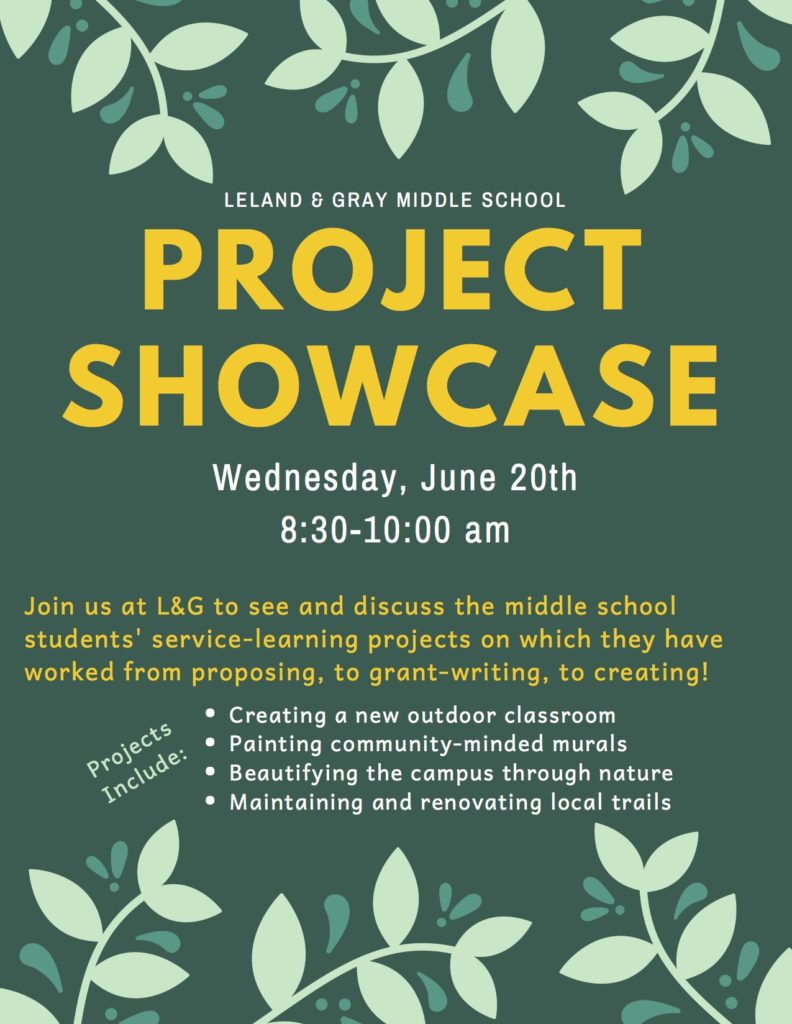
The last day of school will be extra special for Leland & Gray’s middle school students. They will present their service-learning projects to the school and town community: the what and the how, but also the why! Students will take visitors on a tour of the school grounds explaining the purpose of their projects and the learning they did along the way.
They in effect, are gifting their service to a town and community who support them in kind. The circle is closed.
How are your students making a difference in their community?
*Full disclosure: the granting agency mentioned in this story is our organization, The Tarrant Institute. We fund innovative school change projects to qualifying schools around Vermont.
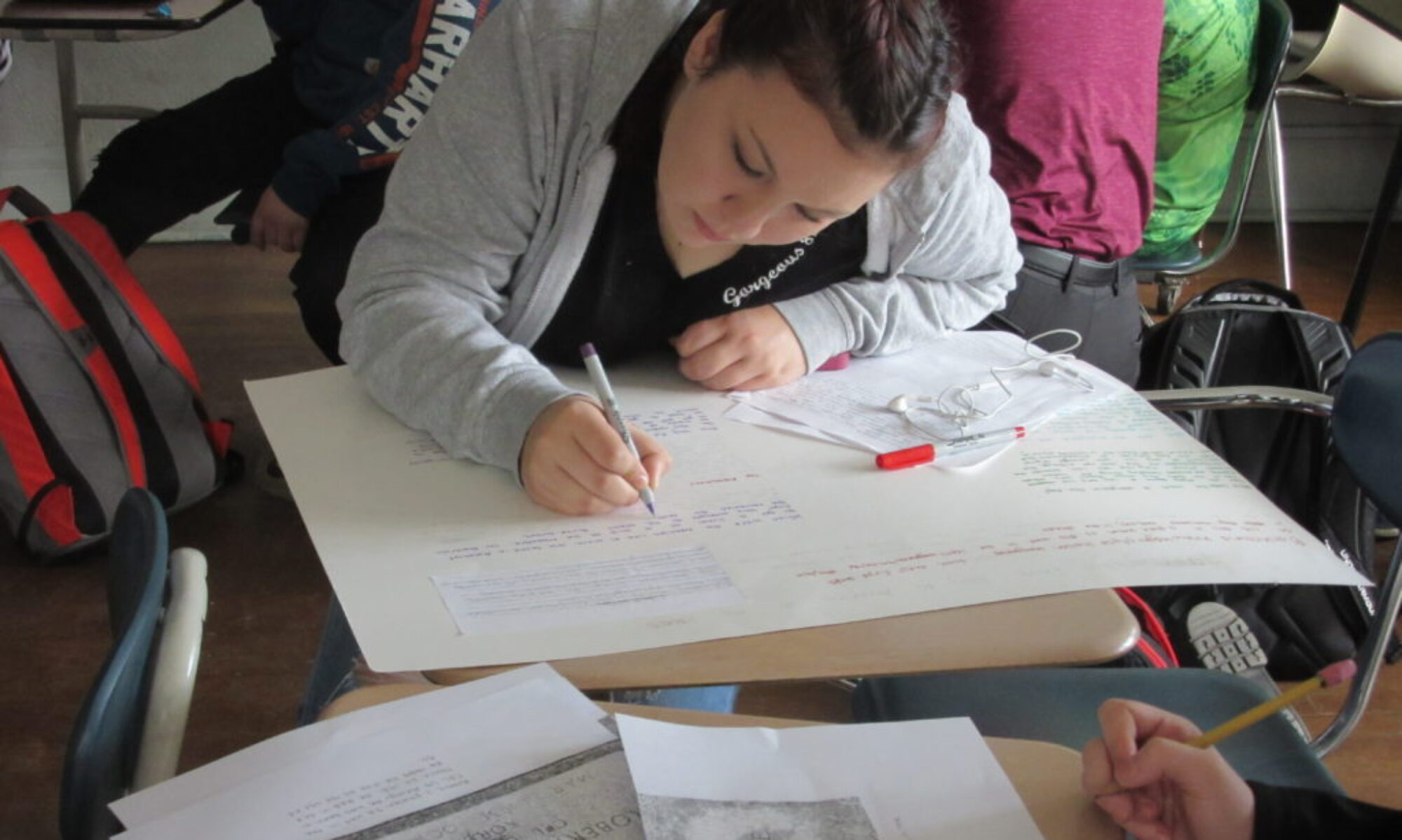

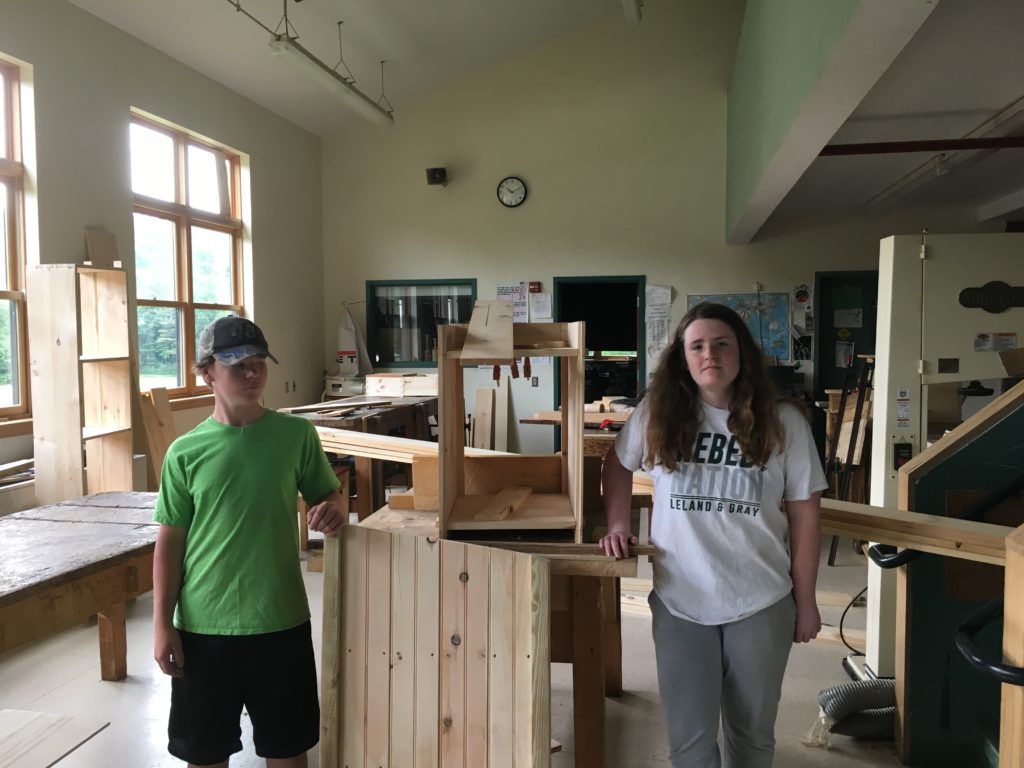
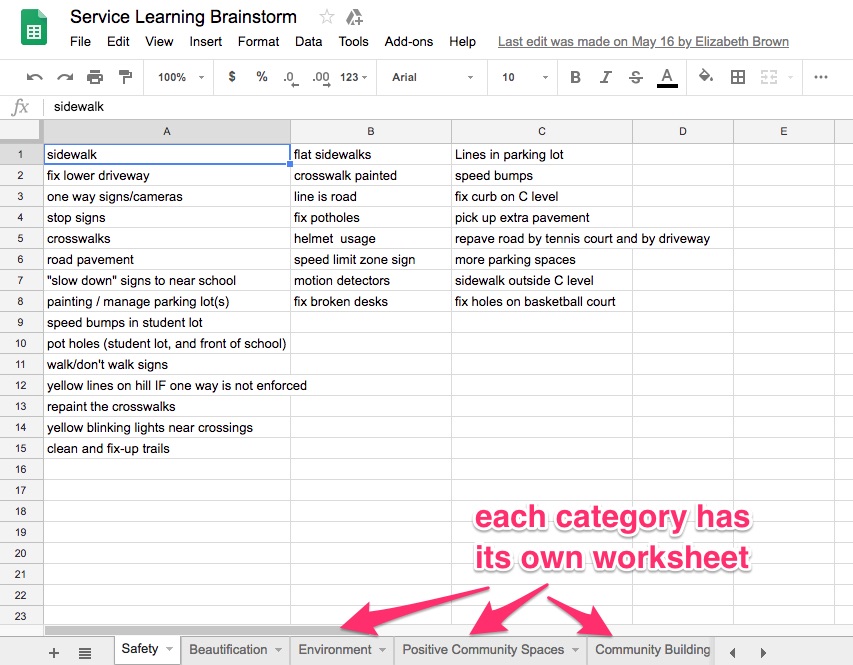
One Reply to “How to plan a service learning project in 5 stages”
Comments are closed.